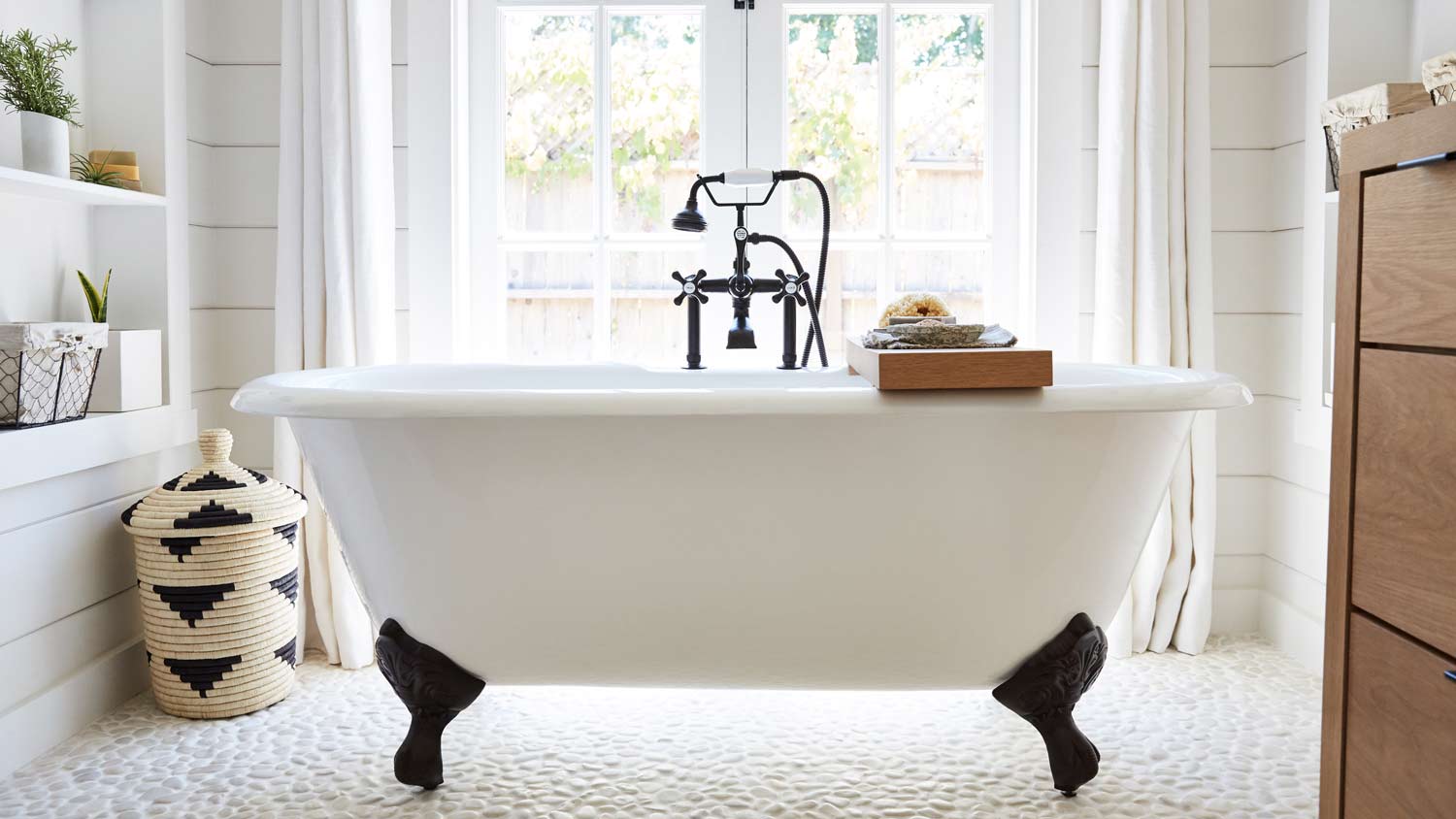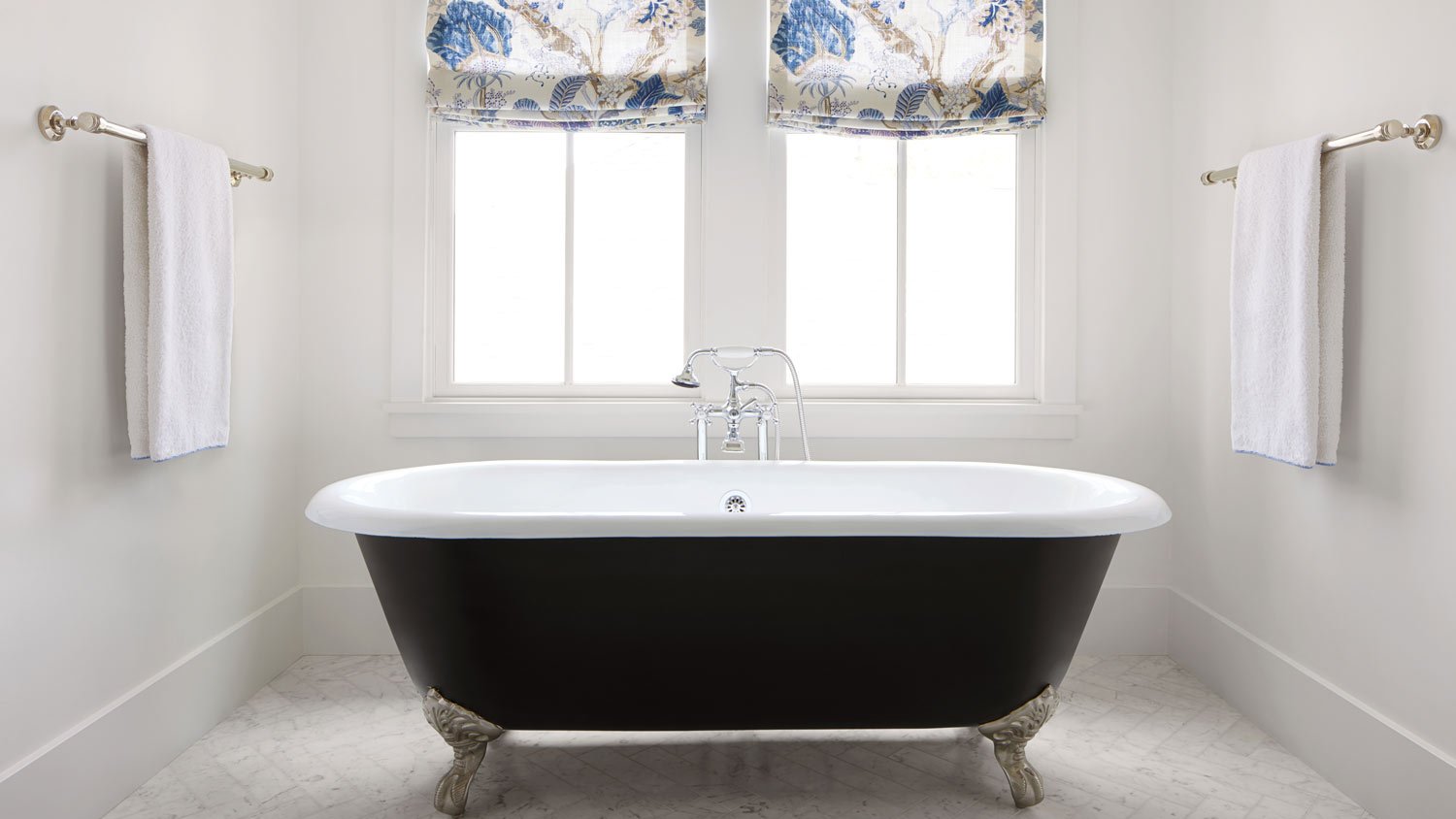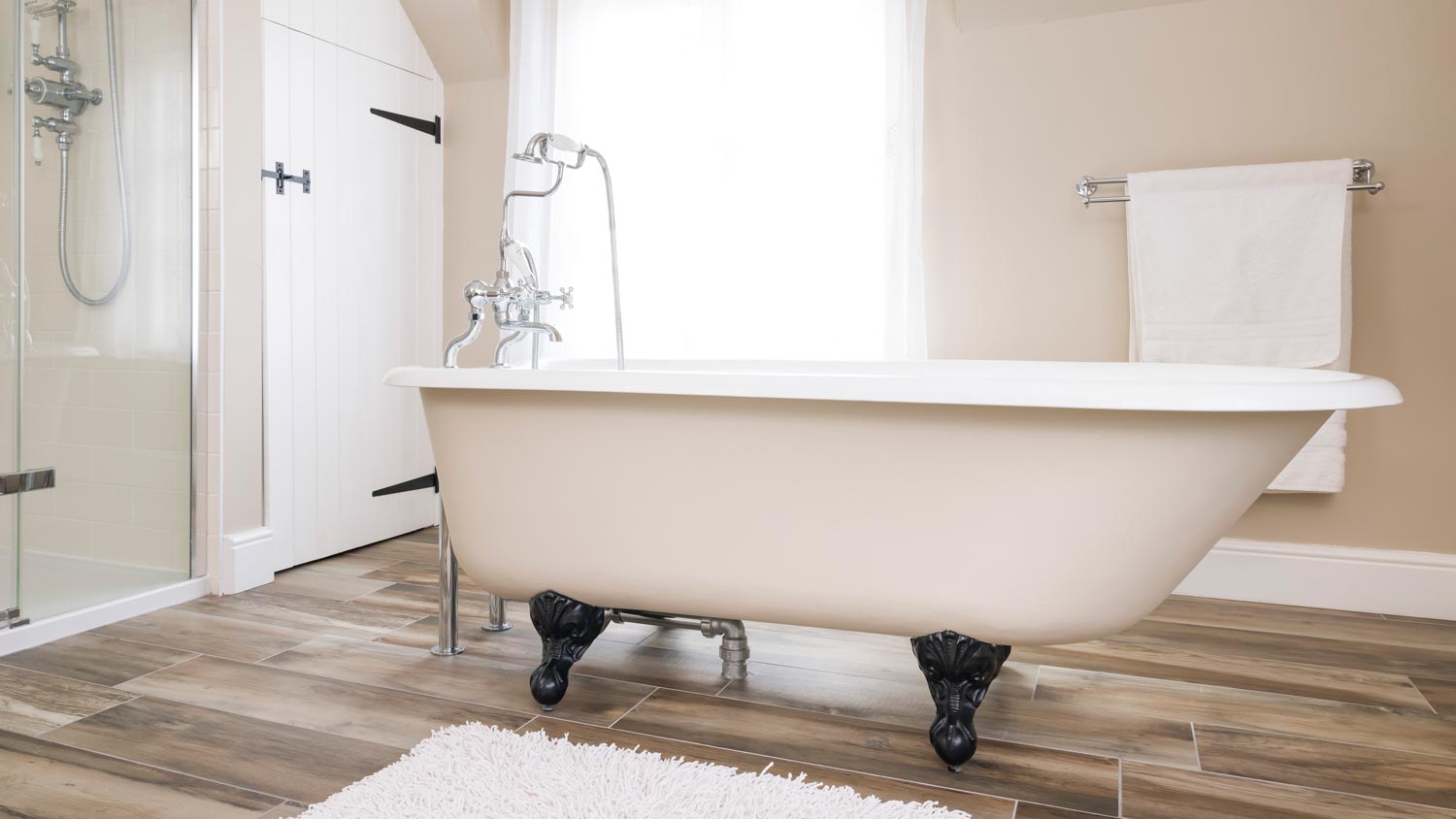
The cost to convert a metal building into a house depends on many factors, from size to chosen materials and whether you already own the property.
Is this freestanding fixture a functional focal point or an ill-judged extravagance?


Clawfoot tubs are traditional freestanding fixtures elevated on four feet.
They’re luxurious and elegant bathroom centerpieces, ideal for long soaks.
These tubs are costly, tricky to install, and take up a lot of space.
If you’re remodeling your bathroom to be a restorative retreat, you might love the idea of a statement-making clawfoot tub—nothing sounds dreamier than a long, luxurious soak in a deep bath surrounded by candles. But these beautiful bathtubs aren’t right for every space. Learn about the pros and cons of clawfoot tubs to help you decide if it will be a sumptuous centerpiece or an impractical indulgence.

Clawfoot tubs are freestanding bathtubs elevated by four feet. They were particularly popular during the mid-19th and early 20th centuries, representing luxury and wealth, made from cast iron and lined with porcelain. These days, they come in a wide variety of sizes, bathtub materials, and designs but often take inspiration from their traditional forebears. If you’re looking for a timeless vintage vibe or just want to upcycle, consider sourcing an original antique clawfoot tub.
| Pros | Cons |
|---|---|
| Timeless elegance | Installation challenges |
| Deep soaking relaxation | Not good for small bathrooms |
| Placement flexibility | Not suited to people with limited mobility |
| Easy access for repairs | Cost |

It’s not just the decorative design that keeps clawfoot tubs in style. Here are some reasons to consider this type of bathtub.
These freestanding focal points make a characterful statement in any bathroom. They instantly add a luxurious, timeless elegance, and because they are raised, they create a feeling of space.
Clawfoot tubs are large and deep—perfect for relaxing in spa-like tranquility or filling with bubbles for a relaxing soak with a good book.
You can position your freestanding clawfoot tub as a statement-making centerpiece in front of a full-length window or under a skylight. This mobility is also a bonus if you want to reconfigure your bathroom layout or take your treasured tub when moving house.
Because clawfoot tubs are not boxed in by tiles or fixed against three walls, it can be easier to complete repair and maintenance work.

Clawfoot tubs won’t suit every bathroom. Diving into their drawbacks will help you decide if it’s the tub for you.
Plumbing: You might have to redirect plumbing and drainage lines depending on where you want your tub to sit.
Uneven floors: Old homes can have uneven floors. You can disguise this more easily with a fitted bath and provide support to prevent drainage issues.
Weight: Clawfoot tubs can be heavy—traditional cast iron types can weigh up to 500 pounds when empty. If you’re installing it in an upstairs bathroom, your flooring could need additional reinforcement. Even hauling it into its location can be challenging.
Clawfoot tubs aren’t the best idea for a small bathroom remodel. They are large, have exposed hardware, and require sufficient space between the tub and the wall. That space means unsightly dust bunnies can gather below raised clawfoot tubs where it’s tricky to clean.
For family members with limited mobility or small kids, a tall clawfoot tub without wall support can be challenging to get in and out of safely. Standard clawfoot bathtub sizes go up to 72 inches tall.
If you have splashing kids or dripping dogs, these freestanding tubs do not have adjoining walls to catch the water. If the bathroom has wooden flooring, you might need to create a tiled, watertight splash zone around the bath to avoid water damage repair costs. Plus, if you want to shower, you’ll need a shower rail and curtain fitted around it. This doesn’t always look attractive, and water spillage is more likely.
Large, ornate clawfoot tubs cost more to buy than a standard fitted design, which only has one finished exterior side. A brand-new clawfoot tub can cost $10,000 or more. Bathtub installation costs can also be higher if you require changes to the plumbing location or you have to factor in floor reinforcement.
If a clawfoot tub isn’t right for your bathroom layout, size, or design direction, there are plenty of other bathtubs to choose from.
Classic alcove tubs: A cost-effective and space-saving style that features a bath surrounded by three walls, and the overhead shower normally sits on one of these walls.
Freestanding tubs without feet: These tend to be lighter acrylic or fiberglass bathtubs and often have a more contemporary twist.
Corner tubs: If you don’t have enough wall space for an alcove tub, consider a corner tub, which gets its support from two walls. They’re large and ideal for relaxing, but they take up a lot of floor space and are often associated with eighties decor.
Drop-in tubs: Another throwback to eighties design, drop-in tubs are surrounded by a deck or platform to provide a deep, luxuriating bathing experience. They also take up a lot of space and aren’t ideal for installing a shower above.
Walk-in tubs: Ideal for family members with limited mobility, walk-in tubs feature a door that allows users to walk straight into the tub. These tubs take a long time to fill and you have to wait for them to drain before getting out.
If you have a spacious bathroom and want to make a statement with a classic, elegant focal point, a clawfoot tub could be the perfect choice—especially if you love a regular relaxing soak. A more common, cost-effective alcove bathtub could be a better fit when you have space or budget restrictions.
If you’re still unsure whether a clawfoot tub will work for your remodel, contact a bathtub installer near you for design tips and guidance.
From average costs to expert advice, get all the answers you need to get your job done.

The cost to convert a metal building into a house depends on many factors, from size to chosen materials and whether you already own the property.

Making your house more accessible is a must for many homeowners, especially those with disabilities or older adults. Here’s what to expect when planning for accessibility improvements.

The cost to install a window seat depends on several factors, such as materials, labor, and options. Here’s a breakdown of the cost to install a window seat.

Building a bump-out addition creates more functional space in your home while also boosting its resale value. Learn more about their costs, benefits, and uses.

When comparing a steam shower versus a sauna, some factors can impact which one is best for you, including installation, temperature, treatment, and cost.

An updated bathtub can give a bathroom a whole new look. Find out how much it costs to replace a bathtub in Boston, MA, including prices by type and labor costs.